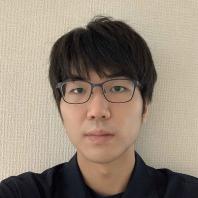![]()
![]()
Research Support Office Research Advancement Division. Tokyo University of Agriculture and Technology
| TEL | +81-42-367-5944 |
|---|---|
| FAX | +81-42-367-5946 |
This program is supported by MEXT’s scientific technology human resource development fee grant, "Program to Disseminate Tenure Tracking System".
Home > Introduction of our tenure-track faculties > Hayakawa Ryo

Hayakawa Ryo

| Affiliation | Institute of Engineering |
|---|---|
| Division | Division of Advanced Information Technology and Computer Science |
| Research field | Signal Processing |
| Keyword(S) | Mathematical optimization, Image processing, wireless signal processing |
| Url | https://web.tuat.ac.jp/~hayakawa-lab/ |
| Research experience | ・Apr. 2017-Mar. 2020: JSPS Research Fellow (DC1) |
|---|---|
| Educational background | ・Mar. 2015: Bachelor of Engineering, Kyoto University |
| Awards | * The latest information is shown at the member's website. |
| Selected papers and publications | * The latest information is shown at the member's website. |
Signal processing is a technology used to manipulate signals like sound, images, and radio waves for the conversion, extraction, and interpretation of information. Since signals in various applications often have unique structures, it's necessary to utilize the properties of the signals being processed.
We conduct research on the mathematics and applications of signal processing. Our main focus includes image processing and wireless signal processing, developing methods to restore signals such as sparse signals, discrete-valued signals, and images from observational data. We are also interested in the theoretical evaluation of performance improvements through the use of signal properties, including analysis on the accuracy and conditions for complete reconstruction of signal recovery methods. Our mathematical tools primarily include techniques known as mathematical optimization and probabilistic inference. Recently, we have been studying the integration of mathematical optimization and machine learning techniques. Our goal is to build foundational technologies that enable us to easily design excellent signal processing algorithms with interpretability and stability for each application.
I think it's a wonderful system that allows young researchers to independently lead their own laboratories from an early stage. It's extremely helpful to receive startup funding to set up the laboratory infrastructure. The consideration given to reducing the burden of teaching and administration also creates an environment conducive to focusing on research.
In addition to advancing my own research, I am committed to education and research to develop talents who can contribute to society through our laboratory. To broaden the scope of our research, I am eager to actively engage in collaborations with individuals both within and outside our university.